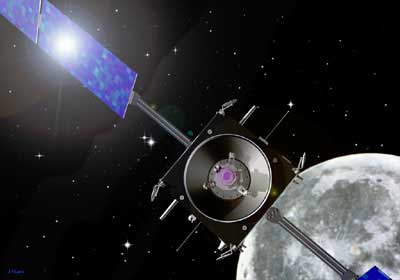Extending the mission by a year will provide opportunities to expand global coverage, compared to the initial half-year mission, and map the northern and southern hemispheres in high resolution
Direct link to this page: https://www.hayadan.org.il/smart260504.html

The Smart-1 spacecraft mission to the moon has been extended by another year, and instead of ending in August 2005, it will last at least until August 2006.
The members of ISA's Scientific Programs Committee unanimously decided to extend the operation of the spacecraft at a meeting held on February 10, 2005. Extending the mission by a year will provide opportunities to expand global coverage, compared to the initial half-year mission, and to map the northern and southern hemispheres in high resolution. The new route will also be more stable and require less fuel for maintenance.
The expansion will also enable detailed studies on areas of interest through stereoscopic measurements to refine knowledge about the topography, observations from many angles to study the regolith structure, and mapping potential landing sites for future missions.
The extended mission will be divided into two six-month periods, in which different parameters of the track and different lighting conditions will be measured. During the first period, the study of the southern hemisphere will be completed and at certain points, observations from many angles, stereoscopic photographs, and lighting studies in the polar region will also be carried out.
In the second period, high resolution photographs will be taken of the equatorial region and parts of the northern hemisphere, due to better lighting conditions. Follow-up high-resolution observations of certain areas will also be carried out, as well as observations relevant to the preparation of lunar landing missions.
Between January 10 and February 9, 2005, Smart-1's electric propulsion system (also known as the ion engine) was inoperative. This allowed mission controllers to better estimate the amount of fuel remaining, as well as ensure accurate plans for extending the mission. The spacecraft will continue to transmit information from an orbit ranging from 4,500 to XNUMX kilometers above the surface of the moon.
All the instruments on the spacecraft work well. As the ion engine continues to run, Smatter 1 will spiral down to reach the orbit sought by the scientists in late February.
